|
|
But, What if I
Dennis Foster [09/02/2016] |
|
|
|
||
|
The news
that the Navajo Nation is once again considering the Grand Canyon Escalade
project has stirred the passions of many, especially in opposition, and I
have become inundated with this. I am much more open to this project and
while that may brand me with a scarlet letter (although my "A" would not
stand for the same thing as Hester Prynne's "A") I would like to offer some
comments on the matter that I hope will strike readers as not unreasonable. First, a little about me and where I am coming from. I have accumulated a long list of hikes in the Grand Canyon since my first short trek down the Bright Angel Trail in 1978, nearly forty years ago. I keep records of these hikes and (so far) I have been on 341 hikes, ranging from day hikes to 11 day treks, spanning 751 days, 426 nights and covering (by very crude estimation) about 6,000 miles. Of these hikes, 146 of them were solo trips, ranging from a single night to nine nights, spanning 332 total days, 190 nights and covering an estimated 2800 miles. Realistically, I don’t think that the Escalade proposal is likely to pass in the Navajo Nation Council, but I could be wrong. The tribal president is against it and there are financial issues that could be serious roadblocks. Still, this is, fundamentally, a decision that will come from the Navajo tribe and not from anyone else. If they choose to follow through with this, then that’s the way it goes. The default setting for how land is used on the reservation lies with them and not with the National Park Service, nor the many environmental groups that bemoan this development. [Unless, of course, we want to take the land away from them which is not without precedent.] I do not presume that the state of Grand Canyon is static. I have enjoyed the Grand Canyon over these past forty years and hope to continue doing some for some years yet to come. It’s not the same canyon today as it was forty years ago. It is not the same canyon as it was in Powell’s time, nor in Hance’s. It’s not the same as in the age of the railroad, or when miners were trying to scratch out a living hauling ore from its depths. For that matter, it’s not the same canyon that was the home to many hundreds of Indians a thousand years ago, living in such places as Nankoweap and Unkar canyons. My passion for the Grand Canyon has been a mix between the enjoyment of the natural environment and my enjoyment of its human history. I do hikes to places that appeal to my appreciation of nature, like Hartman Natural Bridge, or the summit of Deva Temple. And, I do hikes that will take me to places of this human history, like the ruins opposite Mystic Falls, or the cabin remains near Basalt Rapids or the old mining camp in Copper Canyon. And, that appreciation extends to the current developments that do exist in the canyon. Few are the pleasures that top an ice-cold lemonade at the Phantom Ranch canteen on an oppressively hot hike. I am not afraid of the fact that the canyon I enjoy today will be different in fifty years, or in a hundred years, and not just because I won’t be around to enjoy it. I do not cling to the notion that somehow time must stop at Grand Canyon and that the “best” alternative is for nothing to ever change. That is a fiction.
But, let’s put that bigger issue to the side for now and just focus on the Escalade Project. I’m not interested in the issues of sacred land, or of financial burdens, or any other “concerns.” Instead, I just want to focus on the thing that is, or may become, the Escalade. [I presume that will be the name.] First, I suspect that this will not only attract new visitors to the Grand Canyon, but that it will also divert visitors that would otherwise come to either the South Rim or the North Rim. And, I would think that most people would consider this a good thing. Most of us that do a lot of hiking still access many favored canyon areas from the Bright Angel and Kaibab Trails. If these get to be a little less congested, this would seem like a commendable outcome. Indeed, for those that really feel compelled to hike to the bottom but, quite frankly, shouldn’t do so, may opt for the gondola ride many miles away. That might also mean less emergencies that the park service has to deal with on the trails, and perhaps they’ll even pull back on their plans to limit and/or charge day hikers.
Second, the
current plans are just plans. I would think that if avid hikers and river
runners got more involved, they might be able to influence these plans in
ways that would be beneficial. [Sort of like how so many environmental
groups were involved with the Canyon Forest Village proposal from 15 years
ago.] For example, there could be the opportunity for river parties to put
in and/or pull out here, which
I am reminded of a time when I had hiked to Thunder River and literally had it all to myself. For a while. Eventually, about thirty river runners showed up and my idyllic surroundings were turned into something that resembled a bustling 4th of July picnic. But, I did not chafe at the intrusion. Indeed, I was even more appreciative of the time I did have earlier in the morning. And, I’m not going to sign a petition that asks the park service to ban all river running just so that hikers can enjoy more solitude in the Grand Canyon. Third, consider another possible effect that the Escalade could have. Right now, many air tours fly over the eastern part of the canyon. If the Escalade is successful and if it is popular with visitors I would expect that there would quite a bit of pressure to further squeeze those air tour routes out of this part of the canyon. Maybe they go somewhere else, but I bet that otherwise annoyed hikers in Nankoweap and Kwagunt would find that they are better off as a result. Even if all my imagined outcomes come to naught, I still don’t think that the Escalade Project will be the end of the world for Grand Canyon. I don’t think that it is a bad thing for more people to come to the Grand Canyon and see a tiny sliver of what I have seen. And, I kind of like the idea that visitors can come to a place run by the Navajo (more or less) rather than just the NPS. Maybe that kind of competition will spur the park service into reevaluating its philosophy in this regard. The calculus that contends we need to preserve this space so that ten backpackers can hike through here without being disturbed, versus the experience that hundreds of thousands, if not millions, of visitors would get, is flawed.
I am curious
about how avid Grand Canyon hikers would answer the following hypothetical
question – Given that you are a regular healthy individual, would you rather
be living in (i) the 1880s, (ii) the 2000s (i.e., now) or (iii) the 2200s?
Perhaps you’d pick the 1880s, as you would have rather unfettered access to
the Grand Canyon and almost surely all the solitude you could ever
Updated July 31,2021 |
||
|
|
||
|
|
||
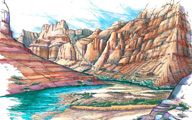
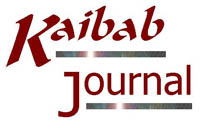
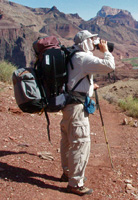
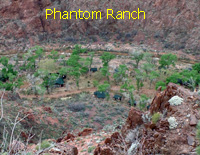 may
be quite well received by those that find it difficult to allocate the time
necessary for a longer trip. And, a Phantom Ranch type of facility at the
Little Colorado sounds rather cool to me. Indeed, if the Park Service can be
convinced into stepping up to the plate here, they could work with the
Escalade Project to put in a decent campground at the confluence, which
means that more hikers would get the opportunity to visit this place. And,
that kind of cooperation is likely to give the park service some leverage in
determining what the Escalade Project ends up looking like, especially the
part within the canyon. I’d love to see a resurgence of development inspired
by the likes of the Watchtower, the Lookout Studio, the Bright Angel Lodge
and Phantom Ranch in the canyon and this would an opportunity for that to happen.
Yes, in this case if you prefer to hike alone to this fabulous spot and have
it all to yourself, that’s not going to happen. You’ll have to share it with
others who also want to come to this place.
may
be quite well received by those that find it difficult to allocate the time
necessary for a longer trip. And, a Phantom Ranch type of facility at the
Little Colorado sounds rather cool to me. Indeed, if the Park Service can be
convinced into stepping up to the plate here, they could work with the
Escalade Project to put in a decent campground at the confluence, which
means that more hikers would get the opportunity to visit this place. And,
that kind of cooperation is likely to give the park service some leverage in
determining what the Escalade Project ends up looking like, especially the
part within the canyon. I’d love to see a resurgence of development inspired
by the likes of the Watchtower, the Lookout Studio, the Bright Angel Lodge
and Phantom Ranch in the canyon and this would an opportunity for that to happen.
Yes, in this case if you prefer to hike alone to this fabulous spot and have
it all to yourself, that’s not going to happen. You’ll have to share it with
others who also want to come to this place.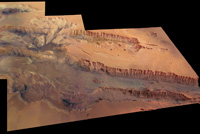 possibly
want; and you could get a burro to carry your stuff. Or, you might pick the
2000s, since we have really great backpacking equipment (but, no burros) and
better hiking food compared to the past. I would pick the future, not only
because they’d have even cooler stuff, but because then it might be possible
to do a backpacking trip in the Grand Canyon … on Mars, aka the Valles
Marineris. Not any human history there, but unless terraforming has taken
off, no river runners either.
possibly
want; and you could get a burro to carry your stuff. Or, you might pick the
2000s, since we have really great backpacking equipment (but, no burros) and
better hiking food compared to the past. I would pick the future, not only
because they’d have even cooler stuff, but because then it might be possible
to do a backpacking trip in the Grand Canyon … on Mars, aka the Valles
Marineris. Not any human history there, but unless terraforming has taken
off, no river runners either.